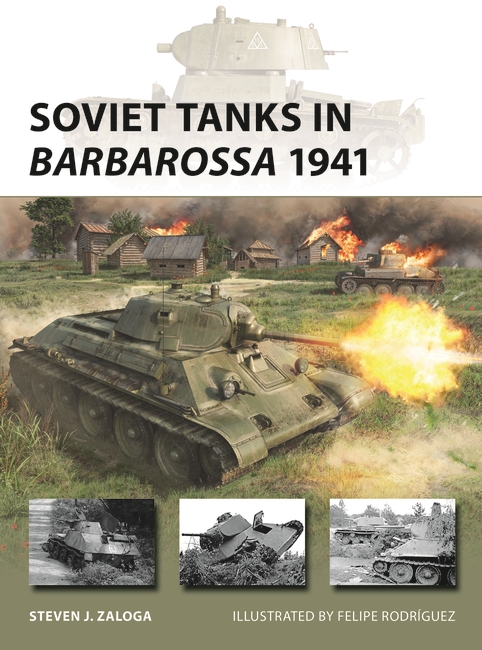
Soviet tanks of World War II are among my favorite themes, so I was happy to embark on this project along with its companion volume on German tanks in Barbarossa. For readers who still believe the nonsense of Kursk being the biggest tank battle of all times, you might want to read this book!
As in the case of the companion German Barbarossa book, I wanted to avoid doing a “lawn-mower catalog” of tank types, armor thickness, gun performance, etc. In the case of the Soviet side of the Barbarossa story, there is an obvious theme, but one which is not well detailed in most historical account. That is what Russian writers have been calling the “1941 Tank Massacre”. The Red Army lost nearly 12,000 tanks in three weeks. To put this in some perspective, that is more tanks than those possessed by all the rest of the armies of the world combined. It is about four times the size of the Panzer force that invaded the Soviet Union. These losses included the majority of the best new tanks including the T-34 and KV heavy tank. So, this provided a central focus for the book. To begin with, I detail how the Red Army built up such an impressive arsenal as well as the vicissitudes of organizing a massive tank force amidst the corrosive influence of Stalin’s political purges. The book then provides a thumbnail sketch of the campaign, highlight the major tank battles where the Red Army suffered these catastrophic casualties. The book attempts to explain why the Red Army, in spite of the technological advantages of the T-34 and KV, as well as substantial numerical advantages, managed to be steamrolled in less than a month of fighting. The answer lies in the ”soft” issues of training, leadership, and organization, and not in the “hard” facts of armor, mobility and firepower.
This book is illustrated with Felipe Rodna’s superb renderings. Readers my be surprised at how few “patriotic slogans” grace the tanks illustrated in the book. That is because the famous Soviet tank slogans were more common post-Barbarossa than in the summer of 1941. Instead, this book examines one of the most overlooked aspects of Soviet tank markings, the extensive use of air identification markings. This is first book to explain these markings in any detail.
You can get a copy of NVG 342 Soviet Tanks in Barbarossa 1941 here.

Comments
You must be logged in to comment on this post. Click here to log in.
Submit your comment